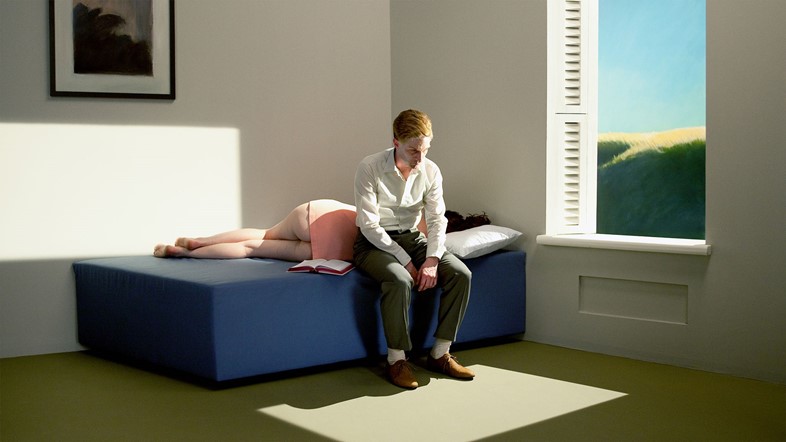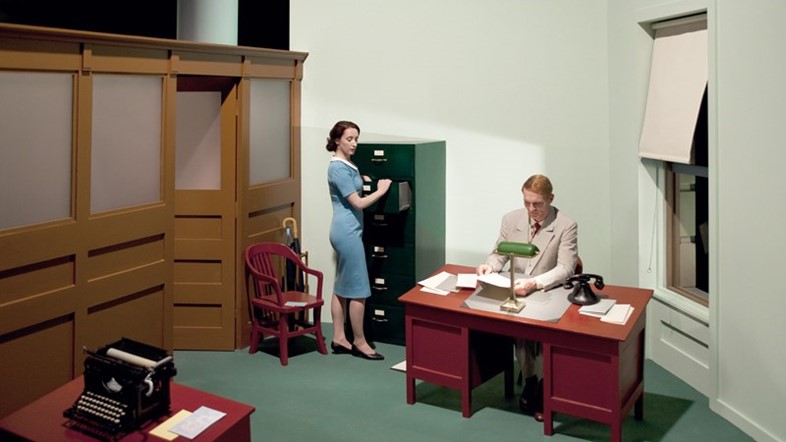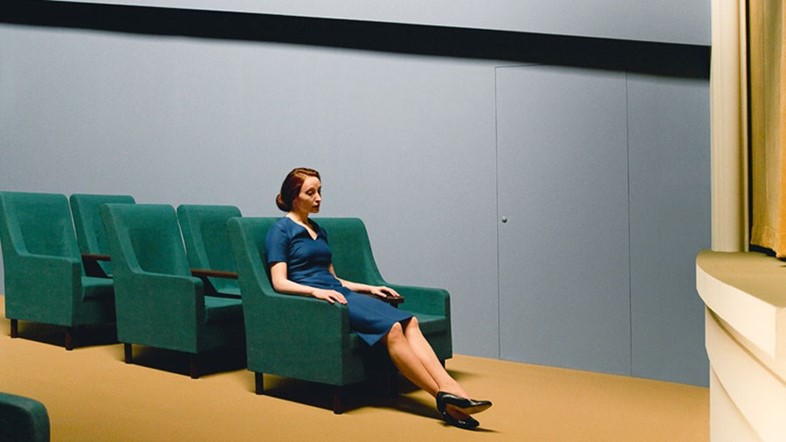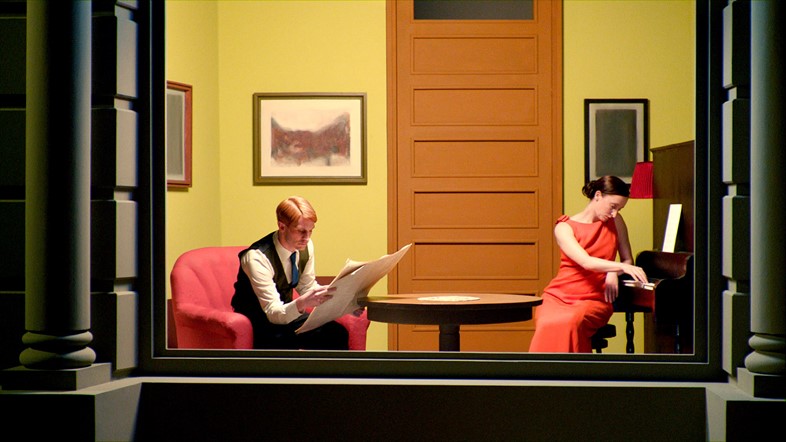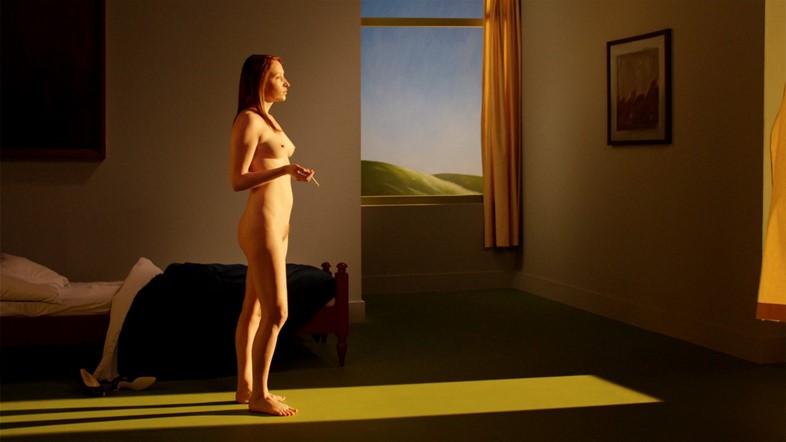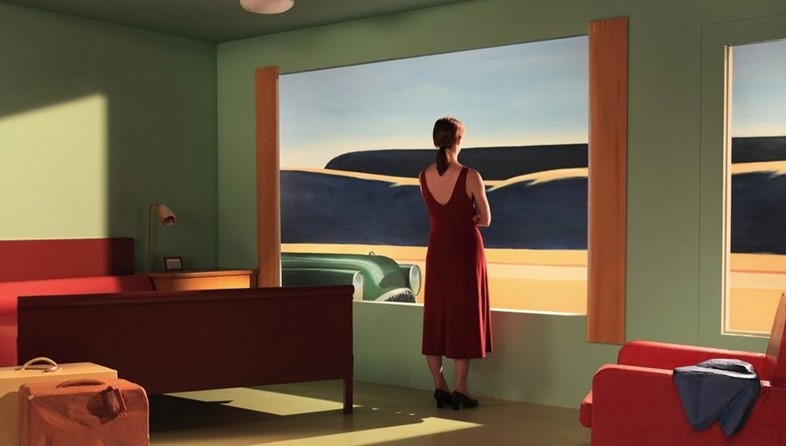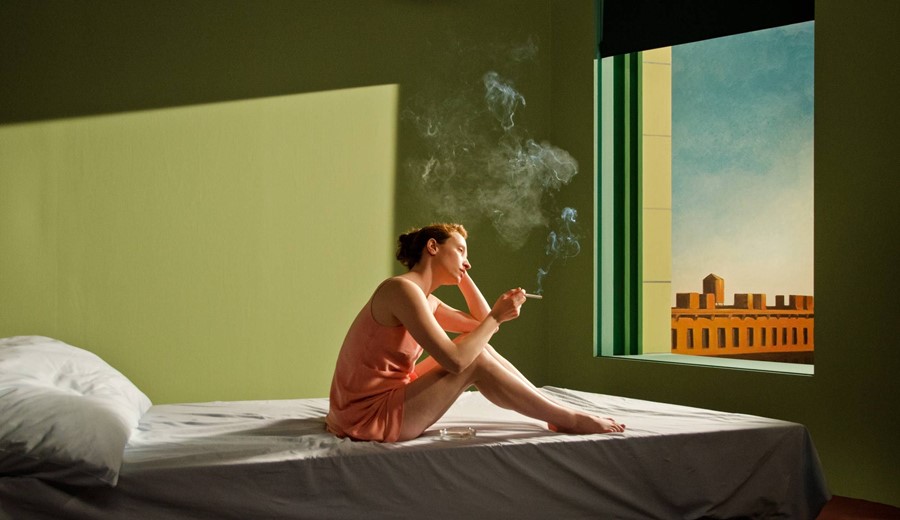“Unconsciously, probably, I was painting the loneliness of a large city,” Edward Hopper once remarked of his masterpiece Nighthawks, the famous scene depicting a downtown diner late at night. In fact, many pieces in Hopper’s oeuvre, a sun-drenched yet grimly nostalgic memento of midcentury modern America, depict solitary figures engaged in an act of reflection. Whether we see them deep in thought in the morning sun or swallowing whisky at a bar after dark, Hopper’s paintings conjure a sense of curiosity for his subjects’ past – and indeed, Vienna-born director Gustav Deutsch was so inspired by this aura of mystery that he decided to create Shirley: Visions of Reality, an exquisite example of interdisciplinary cinema based on the imagery in Hopper's paintings. It was first released in 2013, but the film is now back in the limelight thanks to a Hopper retrospective in Bologna which focuses on the artist's influence on cinema.
Deutsch's film is not the first to have been inspired by the American painter's cinematic paintings. In fact, Hopper has influenced countless filmmakers before – take the voyeuristic element that pervades Hitchcock's Rear Window or the warm-hued deserted landscapes and motel signs in Wenders’ Paris, Texas. Shirley, however stands out as one of a kind. Faithfully reproducing 13 of Hopper's tableaux three-dimensionally on set, the basis of the film is the story of an independent and opinionated New York actress (Stephanie Cumming) whose life we follow through three turbulent decades of American history, from 1931’s Great Depression to the Riots of 1963.
The process Deutsch followed to achieve this level of accuracy was meticulous, visiting museums exhibiting Hopper's work with a colour palette in hand in order to match the paintings’ shades down to the finest detail. The filmmaker's background in architectural studies allowed him to painstakingly recreate Hopper’s theatrical lighting using space and form, rather than relying solely on painted sets to achieve the same effect. The result is a real-life rendering of Hopper’s surrealist patchwork reality – and what better way to escape the Monday blues than with daydreams of retro interiors and vintage Americana?
Happy Monday! #AnOtherHappyMonday
Edward Hopper runs until July 24, 2016 at Palazzo Fava, Bologna.

